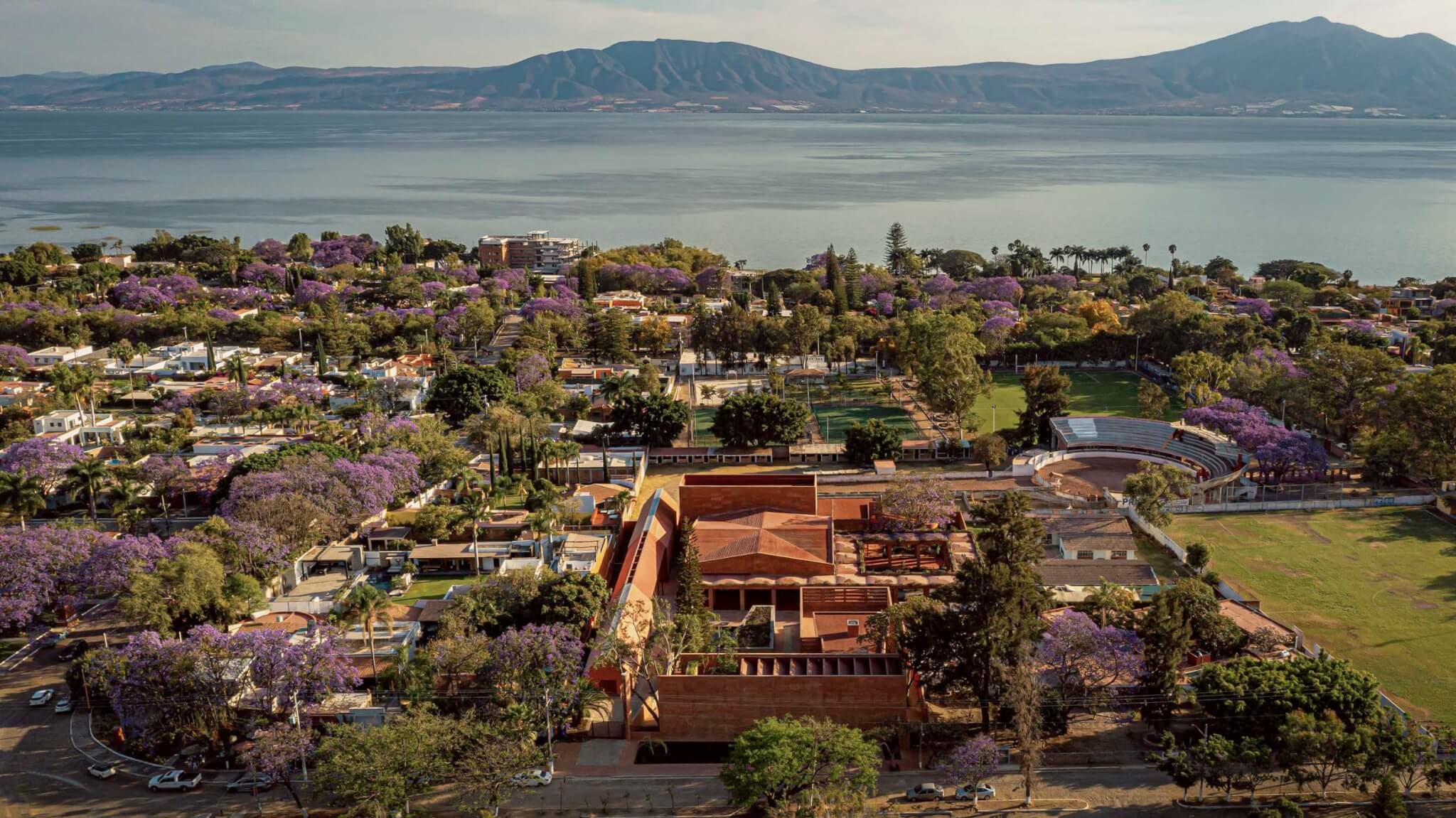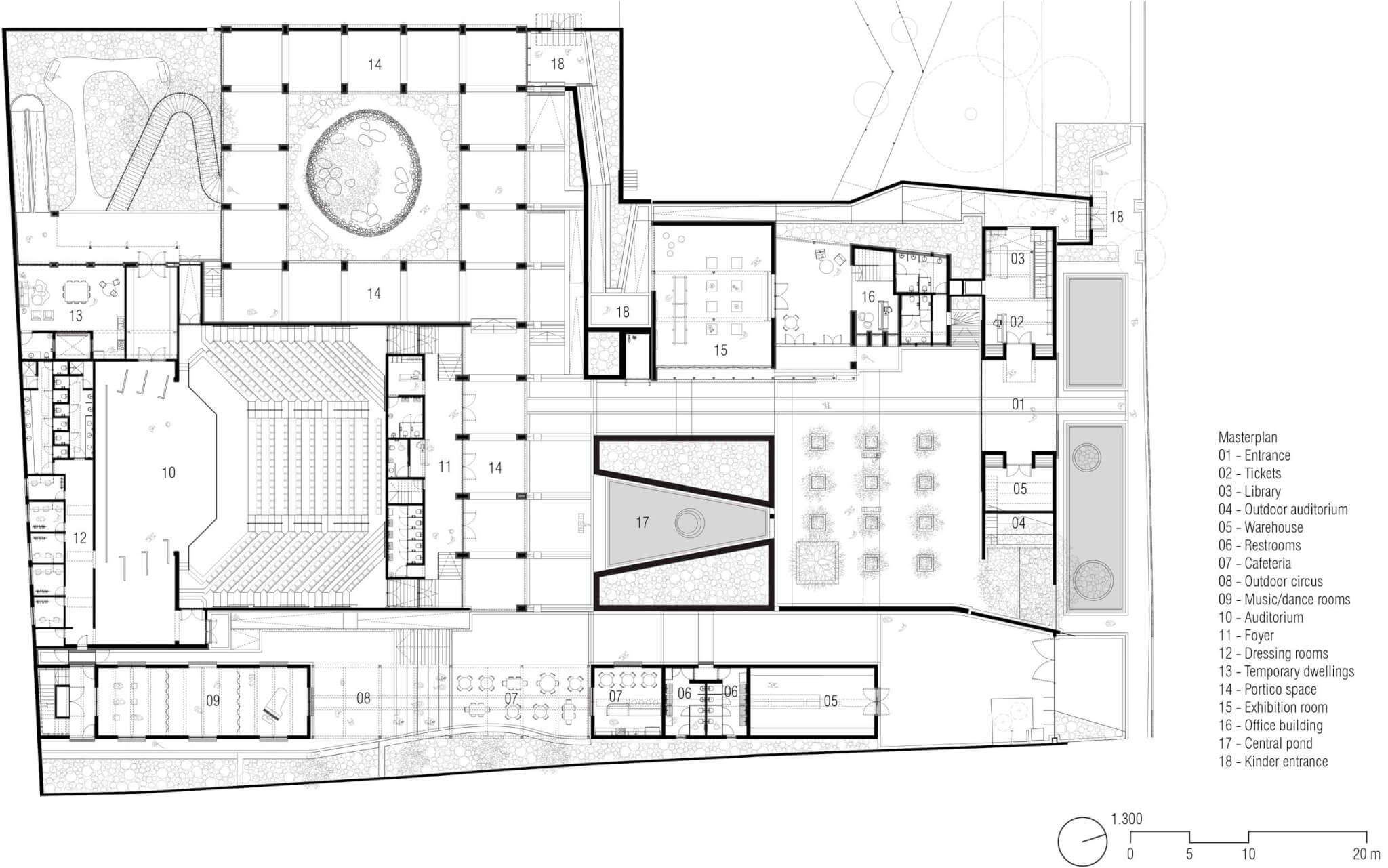Architect: ATELIER ARS
Location: La Floresta, Ajijic, Jalisco, México
Completion Date: 2022
Responding to a request from the Ministry of Culture of the State of Jalisco to “decentralize” cultural centers in the state, Zapopan, Mexico–based architects ATELIER ARS embarked on the design for the Centro para la Cultura y las Artes de la Ribera (Center for Culture and Arts of the Lakeside). Located in the middle of Mexico’s Pacific coastline, the state of Jalisco is anchored by Guadalajara, one of Mexico’s largest cities. The directive to approach a more polycentric diffusion of cultural funding in Jalisco led to a site in Ajijic, a town on Lake Chapala, the largest lake in Mexico.
Combining both adaptive reuse and ground-up elements, ATELIER ARS took inspiration from the temperate local climate and Wixárika culture, whose people are indigenous to the region. The office’s masterplan first incorporated an existing office building and an auditorium with capacity for over 400. The auditorium was shaped by a brick-vaulted portico, which ATELIER ARS took as a baseline material inspiration for their designs. While the existing buildings were not of historical significance, ATELIER ARS chose to reuse them. The firm added a library to serve as the center’s street-facing facade and a longitudinal building hosting a music classroom, dance space, cafeteria, bathrooms, warehouse, amphitheater, and a reflecting pool bordered by stone walls in the center of the site. In plan, the new buildings are situated to form a perimeter border around the site, with the library anchoring the public-facing entrance to the complex.


ATELIER ARS principals Alejandro Guerrero and Andrea Soto told AN that the skilled-labor pool of masons local to towns around Lake Chapala guided design decisions as the architects wanted the project to show off the possibilities of masonry work, particularly with traditional building materials. Across the complex, Guerrero and Soto were motivated by the decision to “display the mineral strata of the territory in the buildings to [establish] a local anchorage strategy… and to benefit the local labor and producers with our material decision. Since the beginning, we knew that the community would feel identified with such [a] decision.”
The post ATELIER ARS promotes local brick and ceramic work on a cultural center in Jalisco appeared first on The Architect’s Newspaper.


